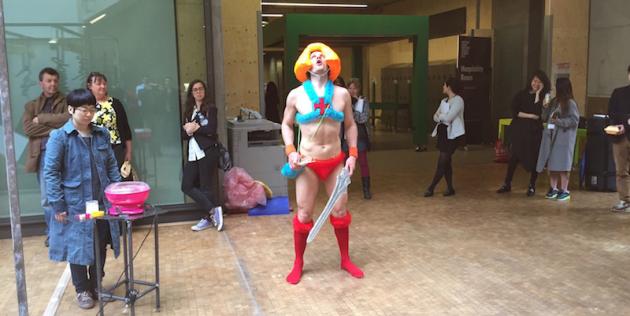All professional artists, at some point in their careers want to achieve the ultimate accolade and that prize is the coveted solo exhibition. Solo exhibitions are a key factor in establishing both the reputation of an artist and also establishing a market for the artist’s work.
Whether you are a painter, sculptor or photographer in order to consider yourself a practising artist you need to get your name and style out there. This by all accounts includes exhibiting your work.
It is only the 1% of artists that eventually secure a first rate gallery like Gagosian, Pace, Hauser and Wirth or White Cube. These artists didn’t just appear on the market. Many have spent years establishing their careers over several decades. There is no fast track to gallery/auction acceptance but here are a few tips.
1) Yes it helps going to a first rate art college but bar this any formal training is a plus. Other than street art or a handful of self-trained naturals it is important to pay your dues and be part of a peer group.
2) Group shows are a must. There are a number of first rate group shows/ opens that take place each year some offer prize money. Most have a £10-£20 entrance fee. If you think you’re good enough to make the grade, do it!
3) Organise your own exhibition. There are many disused urban spaces suitable for a solo or group exhibition. Find these by surveying areas that you think will bring in the right sort of foot traffic. Speak to the landlords of empty hard to rent spaces. They may be willing to do a deal for a week-month, as a short term let.
4) Restaurants and bars may also be interested in having your work on their walls. You may be able to negotiate with them by giving them a 20% commission on work sold. Make sure you have a written agreement with the landlord or restaurant owner.
5) I highly recommend that you present a variety of your mediums at your first solo exhibition. It is unlikely that your 20m installation is going to sell to a member of the public, so show a variety of smaller works that people can actually hang in their homes. Drawings/paintings and smaller studies are a good idea!!!
6) Make sure the work is insured especially if it is a group show! Make sure there is some sort of written documentation of the inventory.
7) Do your own marketing. This is the fun part. Write a good press release with a good hi-res photo. Send this out to all of the mainstream and art press. List the exhibition yourself on online art platforms such as Timeout and Artlyst.
8) Organise a private view. Most works are sold at the private view and it is not rocket science to understand that you invite friends and family to these events and they just may have the spare cash to support you by buying one of your works.
9) Engage with your public. After all they have come to see your work and want to talk to you. This is your night. If it is a group show make sure all artists are present at the opening.
10) Artist led initiatives and groups are a good in. Find out where in your area these groups meet. Some are based in studios some are full blown organisations. Art fairs are an important showcase for emerging artists ALI often pool in together to take a strand at an art fair. This is a great opportunity to reach a wider audience.
I do realise this is a highly simplistic article but hope it was useful none the less – © Paul Carter Robinson Editor/Curator Artlyst
Image: Breaking The Yoke by Chiyuki Harrison Photo P C Robinson © Artlyst 2016

